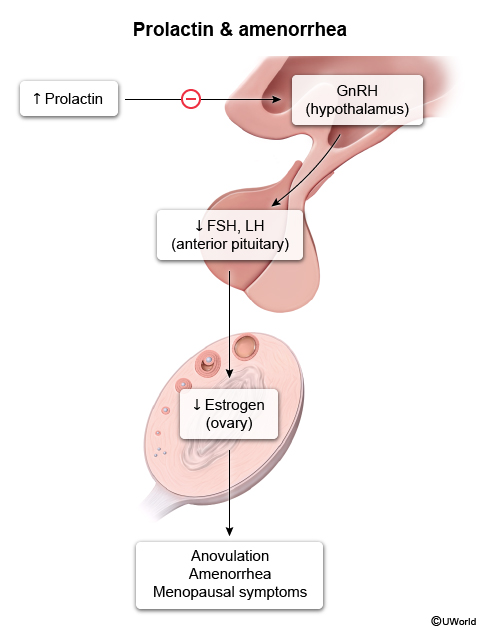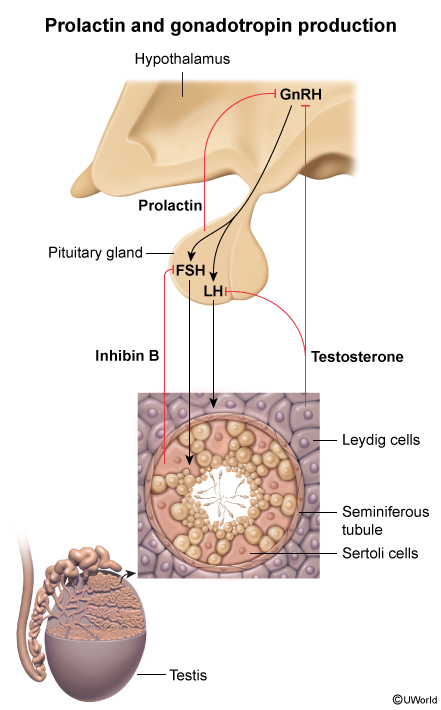Hyperprolactinemia, Including Prolactinoma
Article Sections
Introduction
Hyperprolactinemia is a condition characterized by elevated serum prolactin levels. It can result from physiologic processes, medications, or pathologic conditions (eg, prolactinomas). High prolactin levels suppress the hypothalamic-pituitary-gonadal axis, causing hypogonadism and galactorrhea. Patients with hyperprolactinemia may also present with symptoms related to mass effect from tumors.
Regulation of prolactin secretion
Prolactin is secreted by lactotroph cells in the anterior pituitary gland. It is under constant negative regulation by dopaminergic neurons via the pituitary stalk (Figure 1); dopamine released by these neurons binds to lactotroph D2 receptors and suppresses prolactin production (normal: <20 ng/mL in men and postmenopausal women; <30 ng/mL in premenopausal women).
The negative regulation of prolactin contrasts with the regulation of most other pituitary hormones (eg, LH, TSH), which are under positive regulation on stimulation by releasing hormones (eg, GnRH, thyrotropin-releasing hormone [TRH]) from the hypothalamus.
Continue Learning with UWorld
Get the full Hyperprolactinemia, Including Prolactinoma article plus rich visuals, real-world cases, and in-depth insights from medical experts, all available through the UWorld Medical Library.
Figures
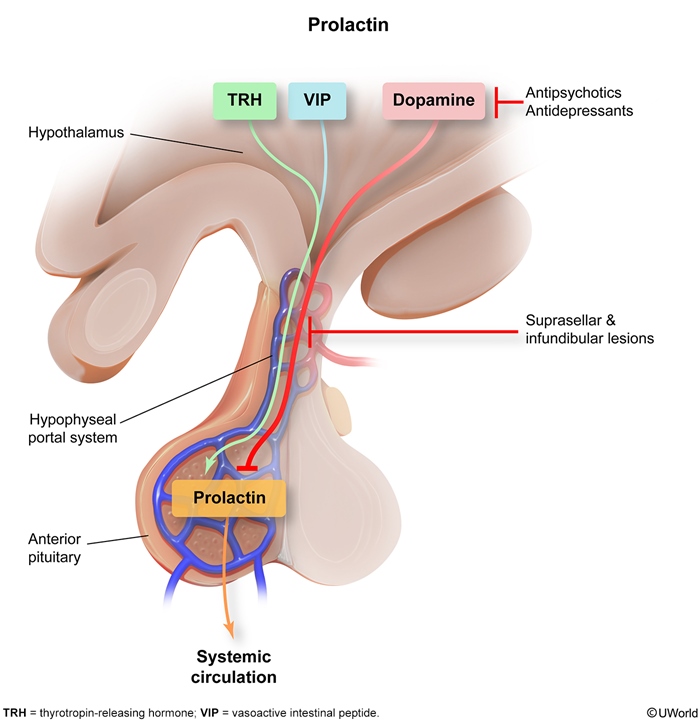
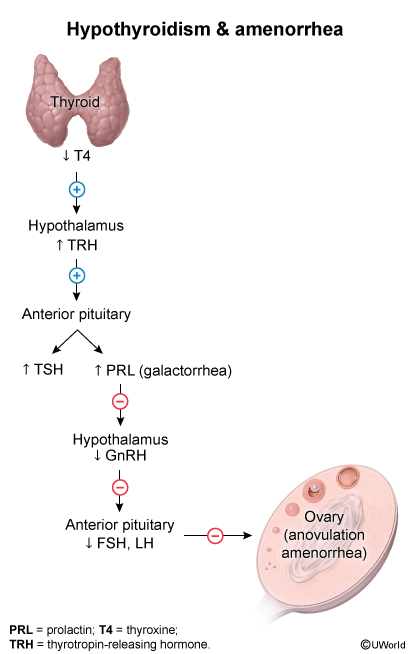
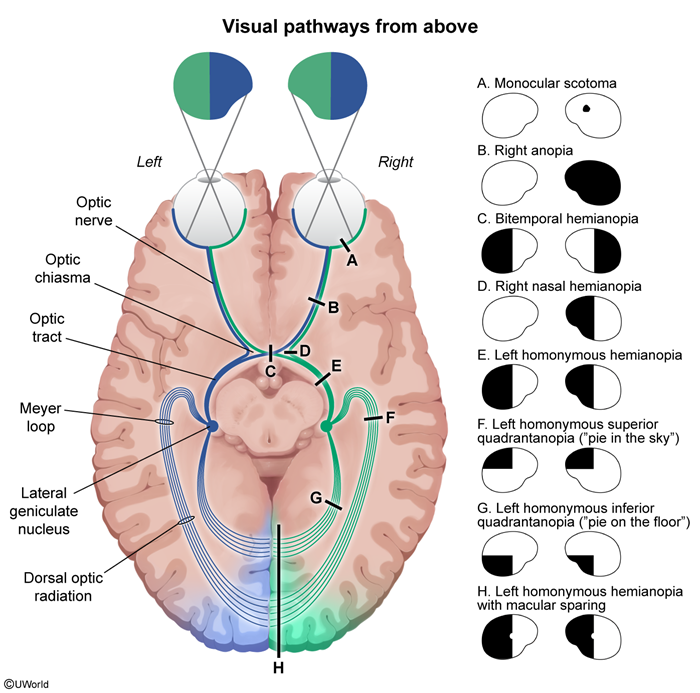
Images
